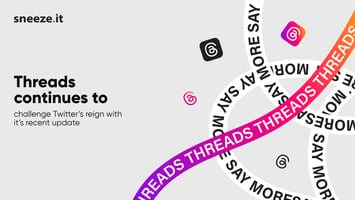Navigating the Uncertain Waters of a Potential Tiktok Ban

Social media platforms like TikTok have become quintessential tools for marketers, providing unprecedented access to broad audiences and facilitating direct consumer engagement at virtually no cost. These platforms allow brands to post updates, engage with customers, and amplify their presence across global markets. However, the control that brands have over these platforms is limited and fraught with vulnerabilities.
Vulnerabilities of Social Media Platforms
Social media platforms are susceptible to various external factors that can disrupt marketing strategies:
- Leadership Decisions: Changes in platform policies or management can affect how brands interact with users.
- Economic Instabilities: Financial difficulties can lead to changes in platform dynamics or even its shutdown.
- Market Trends: Shifts in user preferences and behaviors can render a platform less effective.
- Legislation: Legal challenges and new regulations can restrict or change the way platforms operate.
- Platform Risks: Platforms can impose bans, restrictions, or penalties without notice, often triggered by automated systems that can misinterpret content guidelines.
The TikTok Scenario: A Case Study in Uncertainty
The ongoing discussions about a potential TikTok ban highlight a critical vulnerability in relying heavily on a single social media channel. This possibility forces marketers to reconsider their dependence on external platforms. The risk of losing a major channel like TikTok could significantly impact marketing strategies, especially for brands that invest a large portion of their budget and creative efforts into this platform.
Strategic Diversification: The Need for Owned Assets
The potential ban underscores the importance of a diversified marketing strategy that prioritizes owned assets over rented ones. Here's why focusing on owned assets like websites, blogs, white papers, and direct branding efforts is crucial:
- Controlled Reach: Owned assets provide control over content and engagement, free from the whims of third-party policies.
- Risk Mitigation: Diversifying marketing efforts across various owned channels reduces the risk associated with the failure or loss of a single platform.
- Direct Consumer Engagement: Owned channels offer direct lines of communication with consumers, enabling more authentic connections and feedback loops.
- Brand Narrative: Owning your content allows you to shape and control your brand narrative, ensuring consistency and authority in your market presence.
Future-Proofing Marketing Strategies
Marketers must anticipate and prepare for disruptions by:
- Assessing Vulnerabilities: Evaluate how much your brand would lose if access to a major platform was suddenly cut off.
- Investing in Owned Channels: Develop and enhance websites and other owned media to build a robust digital ecosystem.
- Optimizing Asset Mix: Use third-party platforms to complement and amplify the messaging established on owned channels.
Conclusion: The Way Forward
The delicate balance between leveraging popular social media platforms like TikTok and protecting your brand against potential disruptions is a strategic imperative. By prioritizing investments in owned assets and using social media as a supplementary channel, brands can safeguard their marketing efforts against future uncertainties, including potential bans. This approach not only secures a brand’s digital presence but also ensures that it remains resilient in the face of ever-changing digital landscapes.
Want to learn how Sneeze it can help you take your marketing to the next level? Schedule a meeting below!





